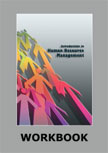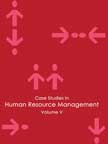Leadership Transition at Infosys
|
|
Case Details:
Case Code: HROB156
Case Length: 17 Pages
Period: 2000-2013
Organization: Infosys Ltd.
Pub Date: 2013
Teaching Note: Not Available
Countries: India
Industry: Information Technology and Consulting
To download Leadership Transition at Infosys
case study
(Case Code: HROB156) click on the button below, and select the case from the list of available cases:

OR
 Price:
Price:
For delivery in electronic format: Rs. 500;
For delivery through courier (within India): Rs. 500 + Rs. 25 for Shipping & Handling Charges
»
Human Resource, Organization Behavior Case Studies
» HRM Short Case Studies
» View Detailed Pricing Info
» How To Order This Case
» Business Case Studies
» Area Specific Case Studies
» Industry Wise Case Studies
» Company Wise Case Studies
Please note:
This case study was compiled from published sources, and is intended to be used as a basis for class discussion. It is not intended to illustrate either effective or ineffective handling of a management situation. Nor is it a primary information source.
Chat with us

Please leave your feedback

|
|




<< Previous
Early History of Infosys
|
Infosys Limited was incorporated as Infosys Consultants Private Limited (Infosys) in 1981 in Bangalore by Murthy and six others with a seed investment of US$ 200. At the time of inception, Murthy and his colleagues decided to build an organization that would command the admiration of others. According to Murthy, “We discussed the objectives of the company and decided that we wanted to become India’s most respected company. Seeking respect was behind our founding Infosys. We deliberately defocused on revenue and profits. Our goal was to do everything by the book. We realized that if we did the right thing, revenues and profits would come automatically.”
|

|
Since its inception, Infosys relied heavily on overseas projects. While six of his colleagues went to the US to start working on software development, Murthy stayed in India to obtain a license from the Reserve Bank of India (RBI). Murthy added, “Computers were not easily available in the market. It used to take at least three years to import a computer to India at that point in time. So we decided that some of us would be based in the US to start work. But, even before travelling abroad it took us 10 days to get a permission from the RBI.”
Infosys did not have the required space to install the computers it purchased, so these were installed in the premises of one of its customers, where the new employees were trained. Products like proprietary banking software were then developed at the site. During this time, Infosys focused on acquiring domain knowledge in segments like retailing, finance, distribution, and telecommunications.
In 1982, the company employed its first set of employees from the Indian Institute of Technology, Madras. These employees were provided training and were sent abroad for onsite projects. After its revenues started increasing, Infosys started spending more on training and product development.
By the late 1980s, Infosys started providing on-site services. In order to execute the IT projects, it stationed its people at the client’s location. They would then develop software to meet the clients’ requirements. This was an expensive proposition. Local talent, especially in locations in the US where Infosys was executing projects, was not readily available and was very expensive. For the most part, the company would place Indian employees at the clients’ location, which was again a costly proposition...
Excerpts
- Next Pages >>
|
|








